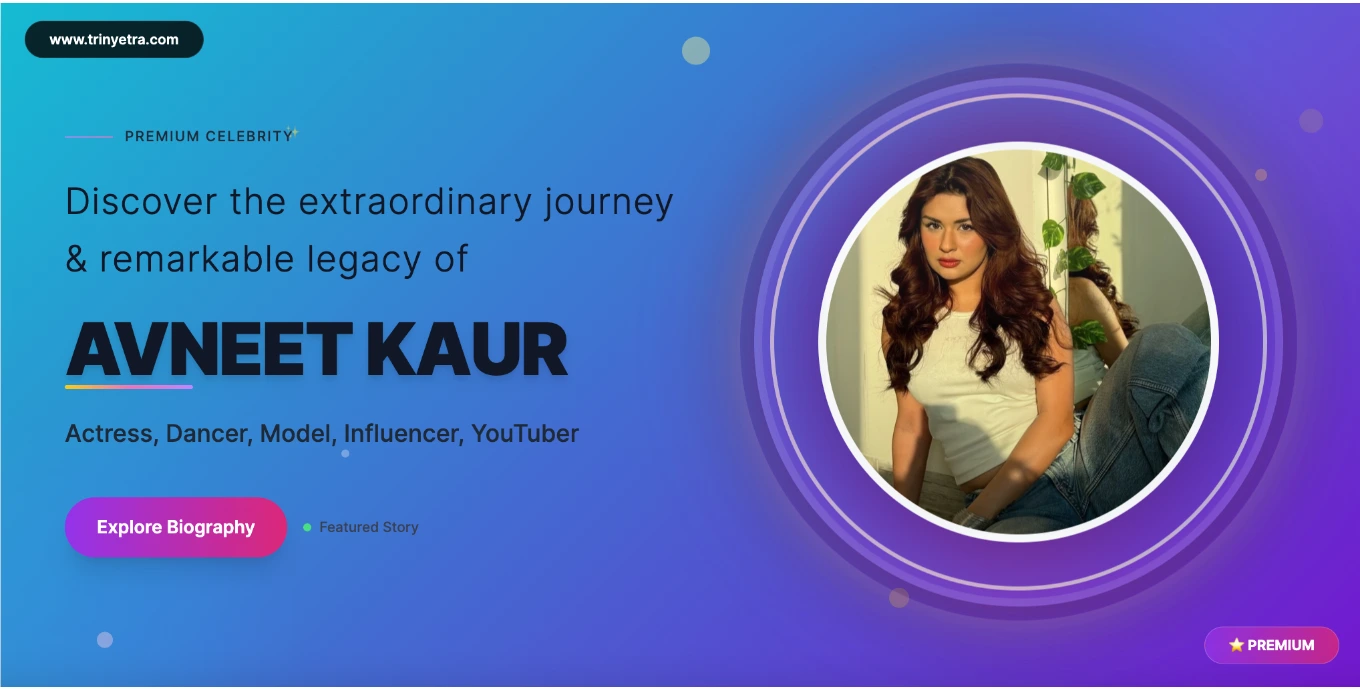 Bollywood
Bollywood
Mr. Bali (Sachin Bali) Biography, Age, Net Worth, Rap Career & Latest Updates
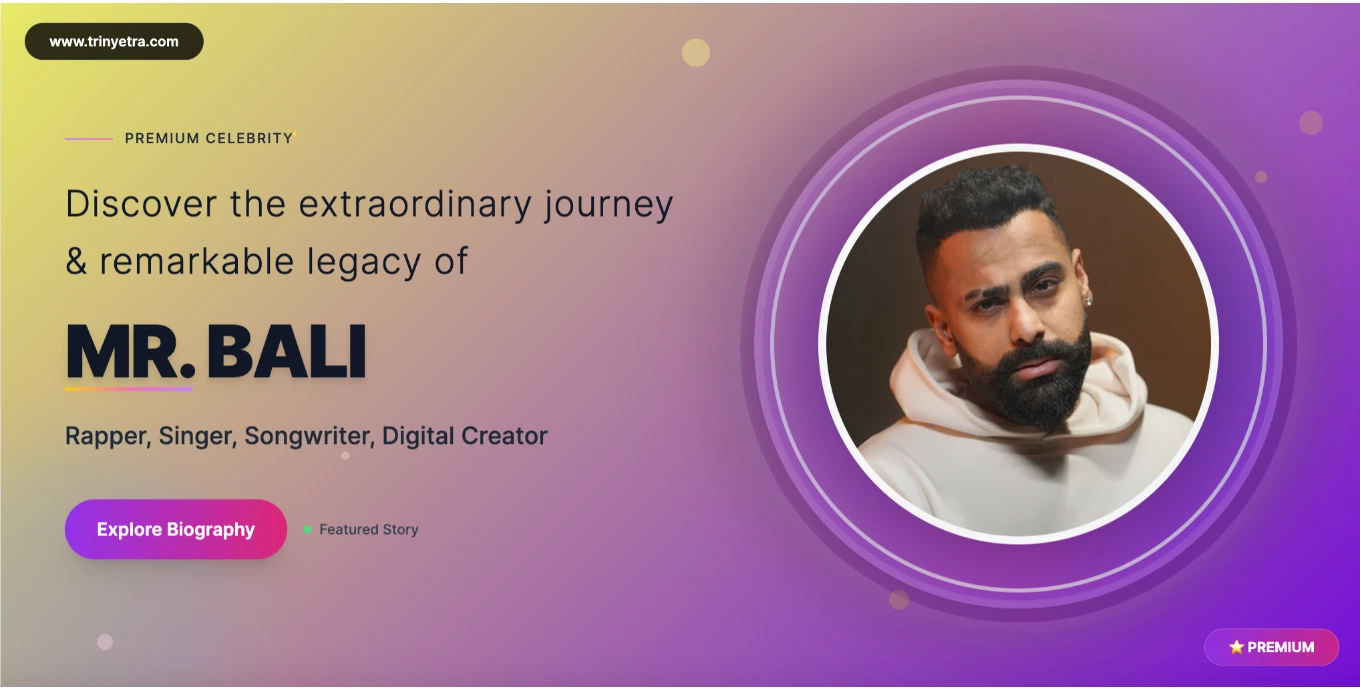
Mr. Bali, born Sachin Bali, represents the new wave of Indian hip-hop that's bridging street culture with mainstream entertainment. For US/UK audiences unfamiliar with India's booming Desi Hip-Hop scene, think of him as Delhi's answer to underground battle rappers who've crossed into reality TV fame—similar to how artists from MTV's Wild 'N Out gained recognition. The 31-year-old rapper has carved a unique niche with his sarcastic punchlines and relatable storytelling that resonates across India's youth demographic.
What sets the Indian hip-hop industry apart is its linguistic diversity and regional authenticity. Unlike the predominantly English-language Western rap scene, Desi Hip-Hop artists like Mr. Bali perform in Hindi mixed with Punjabi phrases, creating a sound that's distinctly subcontinental. His viral track "Sunn Na" exemplifies this cultural blend—combining hard-hitting beats with lyrics that address everyday struggles of Delhi's middle-class youth, from family pressure to career uncertainty.
With an estimated net worth of $600,000 USD / ₹5 crore as of 2025, Mr. Bali has successfully monetized his music through YouTube (600K+ subscribers), live performances across India's growing hip-hop festival circuit, and brand collaborations. His recent appearance on Ashneer Grover's reality show "Rise and Fall" has introduced him to mainstream Indian television audiences, expanding his reach beyond the hip-hop community.
For the Indian diaspora in the US/UK, Mr. Bali represents a cultural touchstone—his lyrics reference familiar experiences like navigating parental expectations while pursuing unconventional careers. For domestic Indian audiences, he's become a voice for Delhi's "gully" (street) culture, following in the footsteps of rappers like Divine and Naezy who inspired the Bollywood film "Gully Boy." His journey from underground battle rap circles to MTV Hustle Season 2 as a guest judge showcases the legitimization of hip-hop in India's entertainment ecosystem.
| Real Name | Sachin Bali |
|---|---|
| Screen Name | Mr. Bali |
| Date of Birth | April 14, 1994 (31 years in 2025) |
| Net Worth | $600,000 USD / ₹5 crore (2025) |
| Height | 5'8" / 173cm |
| Industry | Indian Hip-Hop / Desi Rap |
| Languages | Hindi, Punjabi, English |
| Debut Song | MP3 (2016) |
| Notable Tracks | Sunn Na, Kamyaab, Grind Mode |
Table of Contents
- Biography
- Early Life & Education
- Personal Life
- Hip-Hop Debut & Underground Scene
- Career Journey & Major Tracks
- MTV Hustle & Mainstream Recognition
- Net Worth & Income Sources
- Physical Appearance & Style
- Awards & Recognition
- Business Ventures & Entrepreneurship
- Latest Projects & Reality TV
- Desi Hip-Hop Buzz 2025
- Controversies & Industry Drama
- Interesting Facts
- Social Media & Fan Following
- Industry Relationships
- Frequently Asked Questions
Mr. Bali's Biography & Cultural Background
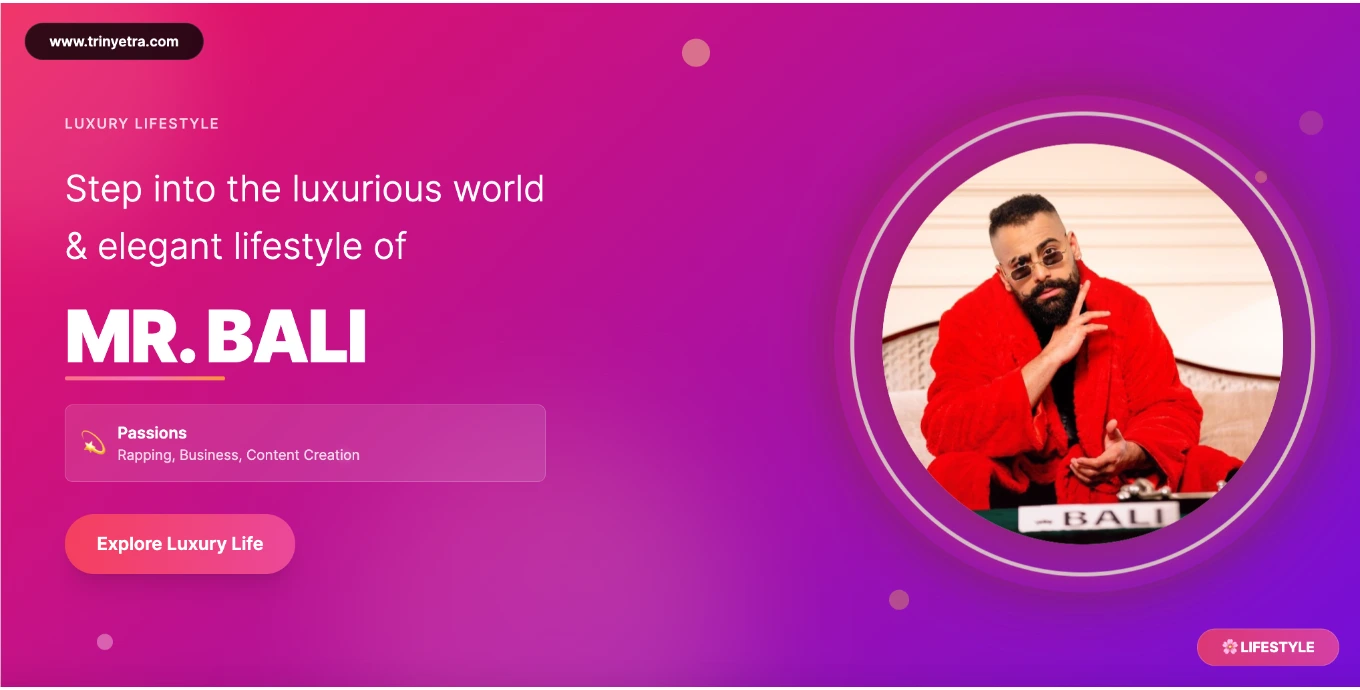
|
Sachin Bali, professionally known as Mr. Bali, is a prominent figure in India's Desi Hip-Hop movement, which emerged as a cultural force in the 2010s. Born into a Punjabi Sikh family in Delhi, he embodies the capital city's vibrant street culture that blends traditional Indian values with global hip-hop aesthetics. Delhi's hip-hop scene differs from Mumbai's (popularized by "Gully Boy")—it's characterized by more aggressive delivery and Punjabi linguistic influences.
Mr. Bali gained national recognition through his viral track "Sunn Na," which accumulated millions of views on YouTube and became an anthem for young Indians dealing with societal pressure and personal ambition. His lyrical style is distinctly sarcastic and punchline-heavy, often addressing topics like fake friends, hustle culture, and the struggle between family expectations versus artistic passion—themes that resonate strongly with India's aspirational middle class.
What distinguishes Mr. Bali in the crowded Indian rap landscape is his authenticity and relatability. While many Indian rappers adopt heavily Westernized personas, Bali maintains a distinctly Delhi identity—his music videos often feature recognizable Delhi locations, he incorporates local slang naturally, and his storytelling reflects genuine experiences rather than borrowed narratives. This authenticity has earned him respect in underground hip-hop circles while also appealing to mainstream audiences.
His career trajectory mirrors the evolution of Indian hip-hop itself—starting from underground battle rap circles and YouTube freestyles to eventually being invited as a guest judge on MTV Hustle Season 2, India's premier rap reality show. This transition from underground to mainstream represents hip-hop's growing acceptance in Indian entertainment, which traditionally favored Bollywood music.
Beyond music, Mr. Bali has built a comprehensive personal brand. He's a digital creator with over 600,000 YouTube subscribers, produces regular content mixing music with lifestyle vlogs, and maintains an active Instagram presence where he engages with fans through behind-the-scenes glimpses and motivational posts. His entrepreneurial spirit extends to co-managing a family business alongside his music career, demonstrating the multi-faceted hustle culture he often raps about.
Early Life & Family Background
Childhood in Delhi's Punjabi Community
Mr. Bali was born on April 14, 1994 in Delhi, India, into a Punjabi Sikh family. Delhi's Punjabi community is known for its entrepreneurial spirit and cultural pride, traits that would later influence Bali's approach to both music and business. Growing up in Delhi during the 1990s and 2000s meant being exposed to a unique blend of traditional Indian culture and emerging Western influences through cable television and early internet access.
Unlike many Indian children pushed exclusively toward conventional careers like engineering or medicine, Bali's family environment appears to have been relatively supportive of creative expression, though specific details about his parents' professions remain private. The Punjabi Sikh culture values both artistic expression (evident in bhangra music traditions) and business acumen, which likely contributed to his dual identity as artist and entrepreneur.
His early interest in rhythm and rhyme manifested during school events, where he would perform rap verses—an unusual activity for Indian schools in the early 2000s when hip-hop was still considered an imported Western genre. This early exposure to performance helped him develop confidence and stage presence that would later serve him in both live performances and reality television appearances.
Growing up in Delhi during hip-hop's nascent years in India meant limited local role models. International artists like Eminem, 50 Cent, and later Drake influenced his musical taste, but the challenge was adapting their style to Indian contexts. This cultural translation—converting hip-hop's essence while maintaining linguistic and cultural authenticity—became a defining characteristic of his artistry.
Educational Journey & Early Musical Exploration
Mr. Bali completed his schooling in Delhi, though specific institutional details haven't been publicly disclosed. During his student years, he began seriously exploring rap as more than just a hobby. The 6th grade marked his first attempts at writing and performing rap verses, an age when most Indian students focus exclusively on academic curricula.
His educational path reflected the typical Indian middle-class experience—balancing parental expectations for academic success with personal artistic aspirations. This tension between conventional career paths and creative pursuits became a recurring theme in his lyrics, resonating with millions of young Indians facing similar dilemmas.
Unlike formal music conservatories, Bali's training came from India's underground hip-hop community—cipher sessions (freestyle rap circles), online tutorials, and learning from slightly older rappers in Delhi's growing scene. This grassroots education gave him street credibility that formal training couldn't provide, essential in hip-hop culture where authenticity is paramount.
After completing his education, rather than immediately pursuing full-time music, Bali took a pragmatic approach—building a financial foundation through family business involvement while simultaneously developing his rap career. This dual-track strategy is common among Indian hip-hop artists who lack the institutional support systems available to Western musicians.
Personal Life & Values
Relationship Status & Privacy
Mr. Bali's marital status and relationship details remain largely private, consistent with many Indian hip-hop artists who prefer keeping personal life separate from public persona. As of 2025, he hasn't publicly confirmed being married or in a relationship, focusing public attention on his music and entrepreneurial ventures instead.
In Indian culture, family privacy is highly valued, and many celebrities choose not to share intimate relationship details until marriage or a serious commitment. Bali's approach reflects this cultural norm while also maintaining the mystique that often benefits entertainment personalities. His social media focuses primarily on music, motivational content, and lifestyle glimpses rather than romantic relationships.
The absence of public relationship drama has allowed him to maintain focus on career growth, avoiding the controversies that sometimes plague celebrities whose personal lives overshadow their professional work. This strategic privacy has helped him build a reputation as a serious artist rather than tabloid fodder.
Lifestyle & Cultural Identity
Mr. Bali's lifestyle reflects urban Delhi's contemporary culture—a blend of traditional Indian values with modern global influences. He maintains strong connections to his Punjabi Sikh heritage while embracing hip-hop's global culture, creating an identity that's authentically hybrid rather than purely imitative of Western rappers.
His daily routine balances multiple responsibilities: music creation and recording, managing his YouTube channel (which requires regular content), engaging on social media, handling business operations, and preparing for performances. This multitasking lifestyle exemplifies the "hustle culture" he frequently references in his lyrics—the constant grind necessary for success in India's competitive entertainment landscape.
| Favorite Food | Punjabi Cuisine, Street Food |
|---|---|
| Favorite Color | Black, Red |
| Musical Influences | Eminem, Divine, Badshah, Raftaar |
| Favorite Music | Hip-Hop, Punjabi Rap, Trap |
| Hobbies | Rapping, Content Creation, Business Management |
| Favorite Destination | Delhi (hometown), Mumbai (music industry hub) |
His fashion sense embodies "urban Desi hip-hop"—combining streetwear brands like Nike and Adidas with traditional elements like turbans or kada (Sikh bracelet) when appropriate. This style resonates with young Indians who want to embrace global trends while maintaining cultural identity. His signature look includes bold accessories, often sarcastic or statement-making, reflecting his lyrical personality.
Fitness and maintaining physical appearance are important aspects of his lifestyle, evident in his music videos and public appearances. Standing at 5'8" with an athletic build (chest: 43 inches, waist: 32 inches, biceps: 13 inches), he represents the contemporary Indian male aesthetic that balances traditional masculinity with modern fitness consciousness.
Hip-Hop Debut & Underground Scene Journey
Breaking Into Delhi's Underground Hip-Hop Circuit
Mr. Bali officially began his professional music career in 2016 with the release of his debut track "MP3". This marked his transition from underground freestyle sessions to recorded music, a crucial step for any aspiring rapper in India's emerging hip-hop scene. The 2016 period was significant for Indian hip-hop—it was just before the genre exploded into mainstream consciousness with films like "Gully Boy" (2019) and reality shows like MTV Hustle.
| Career Debut Details | |
|---|---|
| Debut Track | MP3 (2016) |
| Genre | Desi Hip-Hop / Hindi Rap |
| Language | Hindi, Punjabi |
| Platform | YouTube, SoundCloud |
| Initial Reception | Underground scene recognition |
"MP3" combined humor with hard-hitting beats, establishing Bali's signature style early—sarcastic commentary on contemporary culture delivered with sharp punchlines. The track circulated primarily through YouTube and underground hip-hop channels, building him credibility within Delhi's rap community, where respect from peers matters as much as fan following.
His early career involved grinding through Delhi's underground scene—performing at small venues, participating in rap battles, and collaborating with other emerging artists. This period was financially challenging, as India lacks the infrastructure of music labels and industry support that exists in Western markets. Most Indian underground rappers self-fund their music videos, rely on YouTube revenue, and perform at college festivals for modest fees.
What distinguished Bali during these formative years was his consistency and unique voice. While many rappers tried imitating American styles directly, Bali focused on authentically representing Delhi's culture—using local references, addressing issues relevant to his generation of Indians, and maintaining linguistic authenticity rather than forcing English lyrics for perceived sophistication.
Breakthrough & Viral Success
The breakthrough came with "Sunn Na", which went viral across Indian social media platforms and YouTube. The track's title translates to "Listen" in English, and its confrontational tone addressed fake friends, superficial relationships, and the importance of staying true to oneself—themes universally relatable to young audiences but delivered with a distinctly Indian context and linguistic flavor.
"Sunn Na" accumulated millions of views, transforming Bali from an underground artist to a recognized name in India's hip-hop community. The song's success demonstrated the appetite for authentic Desi Hip-Hop that didn't try to mimic Western aesthetics but instead owned its Indian identity. The music video featured recognizable Delhi locations, resonating with local audiences, while the lyrics' universal themes attracted listeners nationwide.
Following this viral success, Bali released several other notable tracks, including "Kamyaab" (meaning "Successful") and "Grind Mode," each reinforcing his brand as the voice of hustle culture and ambition. These tracks featured better production quality as his growing revenue allowed investment in professional studios and videographers, illustrating the cyclical nature of success in digital-first music careers.
Career Journey & Major Milestones
Evolution as an Artist (2016-2023)
Mr. Bali's artistic evolution over seven years reflects the maturation of Indian hip-hop itself. His early work focused heavily on proving himself within the competitive underground scene—aggressive delivery, battle-rap style disses, and establishing credibility. As his confidence and audience grew, his content expanded to include more introspective tracks, motivational themes, and storytelling that showcased lyrical versatility beyond punchlines.
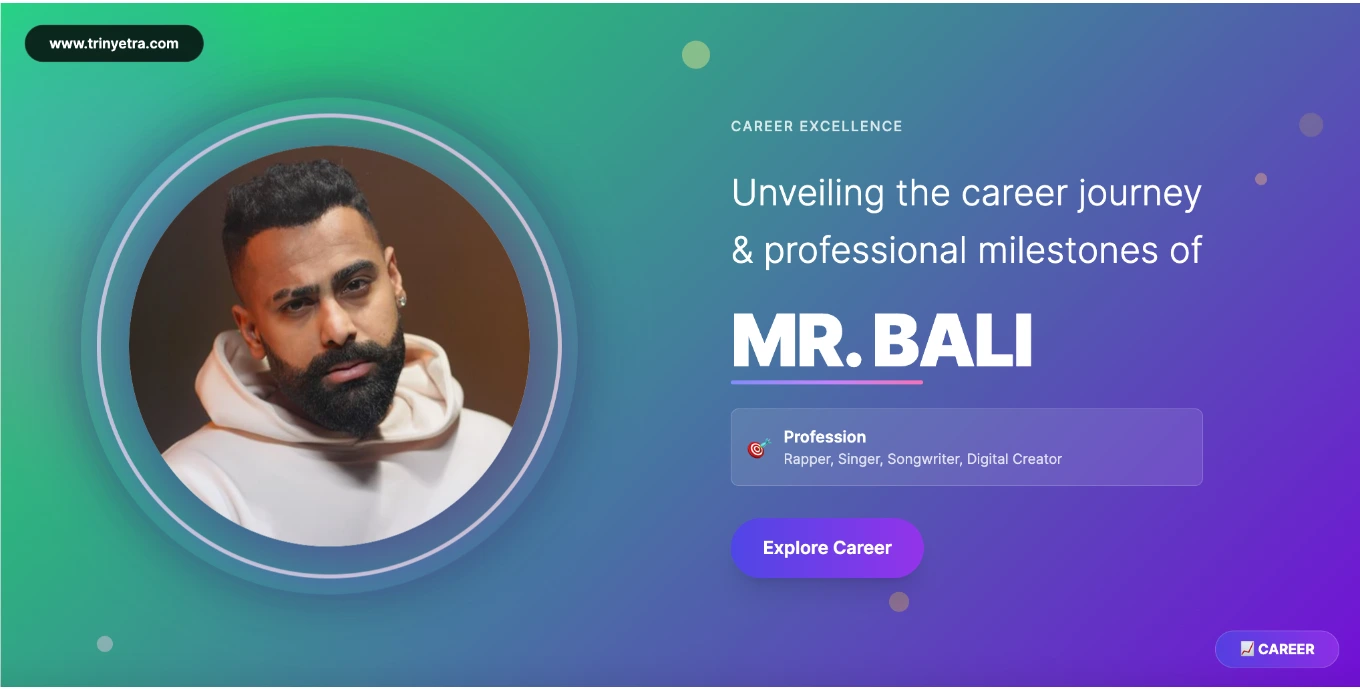
|
His collaboration strategy proved crucial for growth. The Indian hip-hop scene thrives on collaborations—cipher tracks featuring multiple rappers, guest verses on others' songs, and collective projects. Bali strategically collaborated with established names while also supporting emerging artists, building goodwill within the community. This collaborative approach contrasts with Bollywood's traditionally competitive star culture, representing hip-hop's community-oriented ethos.
YouTube became his primary distribution platform, allowing direct connection with audiences without traditional gatekeepers like music labels or radio stations. His channel "The Official Bali" grew to over 600,000 subscribers by mixing music releases with behind-the-scenes content, vlogs, and personal updates. This multi-content strategy kept audiences engaged between music releases and built a loyal fanbase invested in his journey, not just his songs.
Live performances evolved from small underground venues and college festivals to larger hip-hop concerts and multi-city tours. India's growing hip-hop festival circuit—events like Pune's Bacardi NH7 Weekender, including hip-hop acts—provided platforms for artists like Bali to reach larger audiences and earn substantial performance fees, diversifying income beyond YouTube ad revenue.
His lyrical content matured from primarily aggressive battle rap to include social commentary, personal struggles, and motivational messages. Tracks addressed mental health (still taboo in many Indian contexts), the pressure on young Indians to succeed, navigating relationships in modern India, and balancing traditional family expectations with contemporary aspirations. This thematic depth attracted audiences seeking substance beyond party tracks.
Major Tracks & Their Cultural Impact
"Sunn Na" remains his signature track, but several other releases significantly contributed to his reputation. "Kamyaab" became an anthem for hustlers and entrepreneurs, frequently used in motivational social media content. Its lyrics about perseverance despite obstacles resonated during India's startup boom, when many young people were choosing entrepreneurship over traditional careers.
"Grind Mode" similarly captured the zeitgeist of India's aspirational youth culture. The track's production featured trap-influenced beats (a subgenre of hip-hop characterized by heavy bass and hi-hats) while maintaining Hindi lyrics, exemplifying the fusion aesthetics that define contemporary Indian hip-hop. The accompanying music video showcased Delhi's urban landscape, reinforcing local pride.
His discography, while not as extensive as some prolific rappers, maintains quality over quantity—each release strategically crafted and promoted to maximize impact. This approach reflects the realities of independent music production in India, where artists must balance creation with business management, marketing, and content creation across multiple platforms.
MTV Hustle Season 2 & Mainstream Recognition
Transition to Television Judge
Being invited as a guest judge on MTV Hustle Season 2 represented a watershed moment in Mr. Bali's career—validation from mainstream media that underground credibility had translated to broader recognition. MTV Hustle, India's first rap reality show, premiered in 2019 and significantly contributed to hip-hop's mainstream acceptance in India, similar to how American Idol popularized other music genres in the US.
For US/UK audiences unfamiliar with the show's format: MTV Hustle combines elements of "The Voice" (blind auditions) with "Battle Rap" (head-to-head competitions), judged by established Indian hip-hop artists. Contestants perform original verses, battle each other, and receive mentorship from judges. The show's success demonstrated that Indian audiences would embrace hip-hop when presented accessibly, not just as niche underground content.
Bali's judging style reflected his personality—direct, honest feedback delivered with humor but also respect for contestants' efforts. His underground credentials gave him authority when critiquing technical aspects like flow, wordplay, and delivery, while his own journey inspired contestants navigating similar challenges. Guest judges typically appear for specific episodes, providing fresh perspectives alongside permanent judges.
The MTV exposure introduced Bali to demographics beyond hip-hop fans—middle-class Indian families watching youth-oriented programming, older generations curious about this emerging genre, and audiences in smaller cities where hip-hop hadn't penetrated deeply. This mainstream visibility translated to increased social media following, streaming numbers, and performance booking fees.
His MTV Hustle appearance also legitimized hip-hop for skeptical parents and older Indians who viewed rap as foreign, inappropriate, or not "real music." Seeing a respectful, articulate Sikh young man discussing hip-hop knowledgeably on a major network helped shift perceptions, contributing to the genre's broader cultural acceptance in India.
Net Worth & Financial Success
Mr. Bali has achieved notable financial success through multiple revenue streams, reflecting the modern musician's need for diversified income in the streaming era. As of 2025, his estimated net worth is $600,000 USD / ₹5 crore, placing him in the upper tier of Indian independent musicians, though below Bollywood playback singers and mainstream film stars.
| Net Worth (2025) | $600,000 USD / ₹5 crore (approx.) |
|---|---|
| Annual Income | ₹80 lakhs - ₹1.2 crore |
| Monthly Income | ₹7-10 lakhs |
| Per Performance Fee | ₹2-5 lakhs per show |
| YouTube Revenue | ₹3-5 lakhs monthly (estimated) |
| Other Income Sources | Brand Collaborations, Business Ventures |
His primary income sources break down into several categories, each requiring active management and strategy:
YouTube Revenue: With 600,000+ subscribers and millions of monthly views across music videos and vlogs, YouTube ad revenue forms a substantial base income. Indian YouTube CPM (cost per thousand views) ranges from ₹50-200, depending on content type and audience demographics, meaning consistent content creation is essential for maintaining this revenue stream. His channel's mix of music and lifestyle content attracts advertisers targeting young, urban Indians.
Live Performances: College festivals, hip-hop concerts, corporate events, and private shows contribute significantly. Fees range ₹2-5 lakhs per performance depending on event scale, location, and his setlist length. As India's event industry recovered post-pandemic and hip-hop concerts became more common, performance opportunities increased substantially for recognized artists like Bali.
Streaming Platforms: Spotify, Apple Music, Gaana, JioSaavn, and YouTube Music generate streaming revenue. While per-stream payouts in India are lower than Western markets (₹0.30-0.50 per stream vs. $0.003-0.005 in the US), his cumulative streams across platforms add meaningful income. His catalog's consistency means passive income from older tracks continues as new fans discover his music.
Brand Collaborations: As social media influence grew, brands targeting young Indians began approaching him for partnerships. These range from product placements in music videos to dedicated promotional posts on Instagram. Typical brand collaboration fees for artists at his level range ₹1-3 lakhs per campaign, depending on deliverables and brand budget.
Business Ventures & Investments
Beyond music, Mr. Bali co-manages a family business, though specific industry details remain private. This business involvement provides financial stability independent of music career fluctuations—a pragmatic approach common among Indian artists who recognize entertainment income's unpredictability. His business acumen, referenced in his lyrics about "hustle" and "grind," translates to actual entrepreneurial activity beyond metaphor.
His investment strategy appears conservative compared to flamboyant celebrity spending often portrayed in rap culture. Rather than excessive luxury displays, he seems focused on sustainable wealth building—property investments in Delhi's appreciating real estate market (though specific holdings aren't publicly disclosed), maintaining business operations, and reinvesting in music production quality.
This financial pragmatism reflects both Indian middle-class values (saving, investing for security) and awareness that independent music careers require self-funding. Unlike Bollywood stars with film budgets supporting their music videos, independent rappers like Bali must finance their own production, marketing, and distribution from earned income.
Physical Appearance & Urban Desi Hip-Hop Style
| Height | 5'8" / 173 cm |
|---|---|
| Weight | 165 lbs / 75 kg |
| Body Type | Athletic / Fit |
| Eye Color | Dark Brown |
| Hair Color | Black |
| Skin Tone | Wheatish |
| Distinctive Features | Sikh identity, urban streetwear style, expressive facial hair |
| Body Measurements | Chest: 43", Waist: 32", Biceps: 13" |
Mr. Bali embodies the aesthetic of urban Desi Hip-Hop—a fusion of global streetwear trends with Indian cultural markers. Standing at 5'8" with an athletic build, he represents contemporary Indian masculinity that values fitness and presentation without excessive bodybuilding culture. His physical stats (43-inch chest, 32-inch waist, 13-inch biceps) reflect consistent gym work, common among image-conscious entertainers.
His style evolution mirrors his career trajectory. Early music videos showed budget-conscious streetwear—basic hoodies, jeans, and sneakers. As success enabled higher fashion investment, his wardrobe upgraded to recognizable brands like Nike, Adidas, and H&M while maintaining street authenticity. Unlike some Indian rappers who adopt completely Western aesthetics, Bali occasionally incorporates traditional elements—turbans (reflecting Sikh identity) or statement jewelry—creating a hybrid look that's culturally grounded.
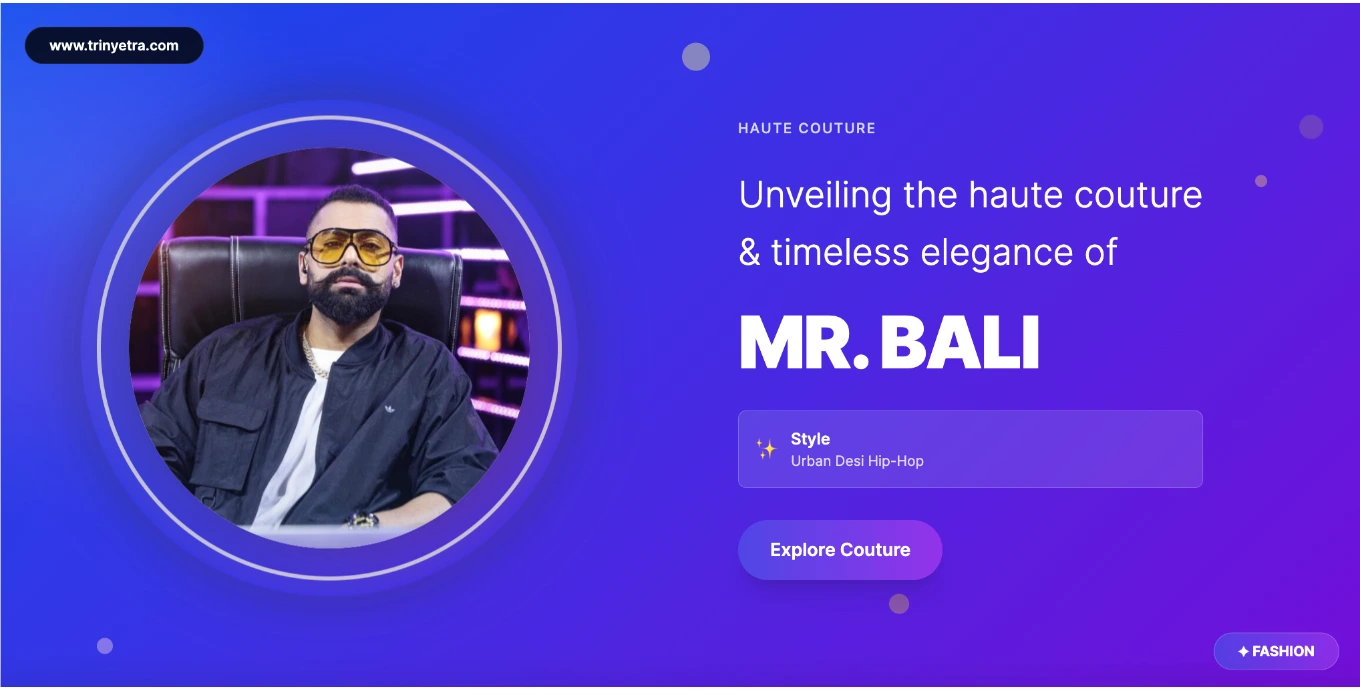
|
His signature look includes bold accessories—chains, rings, and occasionally traditional kada (Sikh bracelet)—that make visual statements without overwhelming his appearance. His facial hair styling varies from clean-shaven to maintained stubble, adapting to current personal preference and music video concepts. Dark brown eyes and black hair are complemented by wheatish (medium) skin tone, representing the diversity of North Indian phenotypes.
Fitness maintenance involves regular gym sessions focusing on maintaining lean muscle and cardiovascular health for energetic stage performances. Hip-hop performances are physically demanding—constant movement, crowd engagement, and vocal projection for 30-60 minute sets—requiring good physical conditioning beyond just visual aesthetics.
Awards & Recognition
Mr. Bali has received recognition both from digital platforms and within India's hip-hop community, though traditional mainstream awards (Filmfare, IIFA, etc.) have been slow to acknowledge non-Bollywood musicians. His accolades reflect the evolving nature of music industry recognition in the digital age.
| Year | Award/Achievement | Category | Significance |
|---|---|---|---|
| 2020 | YouTube Silver Play Button | Digital Achievement | 100,000+ subscribers milestone |
| 2022 | MTV Hustle Season 2 | Guest Judge | Mainstream recognition |
| 2023 | Viral Track "Sunn Na" | Streaming Success | Multi-million views, cultural impact |
Digital Platform Recognition
The YouTube Silver Play Button (awarded for surpassing 100,000 subscribers) represented an important milestone—validation that his content resonated with a substantial audience. While some dismiss YouTube metrics as less prestigious than traditional awards, for independent digital artists, these milestones represent genuine audience building without industry gatekeeping or promotional machinery.
His tracks appearing on official Spotify India playlists and YouTube trending pages constitute informal recognition of relevance and quality. These algorithmic endorsements, while not traditional "awards," translate directly to increased listenership and revenue—arguably more valuable than ceremonial trophies for independent artists.
Industry Respect & Cultural Impact
Within Indian hip-hop circles, respect from peers constitutes significant recognition. Established artists like Divine, Raftaar, and Badshah acknowledging Bali's work through social media shoutouts or collaboration invitations represent validation from the genre's pioneers. This community recognition matters deeply in hip-hop culture, where authenticity and peer respect trump mainstream commercial success.
Being invited as an MTV Hustle guest judge itself constitutes recognition—the show's producers selecting him indicated his credibility and ability to mentor emerging artists. Unlike Bollywood, where nepotism often determines opportunities, hip-hop judging requires genuine knowledge and community standing that can't be manufactured through family connections.
His cultural impact extends beyond measurable awards—"Sunn Na" becoming part of social media soundtrack, his lyrics quoted in motivational posts, and his journey inspiring aspiring rappers across India's tier-2 and tier-3 cities. These intangible impacts often matter more than formal accolades in building lasting cultural relevance.
Business Ventures & Entrepreneurship
Family Business Management
Mr. Bali co-manages a family business alongside his music career, embodying the "hustle culture" he frequently celebrates in his lyrics. While specific business details remain private, this dual-career approach reflects practical wisdom common among Indian independent artists who recognize that entertainment income can be unpredictable, especially in genres still establishing commercial viability.
This entrepreneurial side distinguishes him from artists who present purely artistic personas. His business involvement isn't separate from his music identity—rather, it's integral to his brand as someone who practices what he preaches about grinding, multiple income streams, and building sustainable success beyond viral moments. This authenticity resonates with audiences who aspire to similar balanced approaches.
The business management experience likely contributes to how he handles his music career professionally—understanding contracts, negotiating performance fees, managing cash flow, and making strategic decisions about investments in production quality versus marketing. Many talented artists fail commercially due to poor business management; Bali's entrepreneurial background provides a competitive advantage.
Digital Content Creation & Monetization
Beyond music, Mr. Bali has built a comprehensive digital presence as a content creator, diversifying beyond pure music releases. His YouTube channel "The Official Bali" features music videos, behind-the-scenes content, vlogs documenting his journey, motivational talks, and lifestyle glimpses—creating multiple content categories that keep audiences engaged between music releases and expand his appeal beyond hardcore hip-hop fans.
This content strategy reflects an understanding of modern entertainment economics: relying solely on music streaming generates insufficient income for most independent artists. Building a personal brand across content types creates multiple monetization pathways—YouTube ad revenue, brand sponsorships, merchandise potential, and maintaining relevance during gaps between music releases.
His Instagram strategy focuses on engagement rather than just follower counts—responding to comments, sharing fan art, posting motivational quotes resonating with his audience's aspirations, and documenting his daily hustle. This authentic engagement builds a loyal community rather than passive followers, translating to higher conversion rates when promoting music releases or performances.
Latest Projects & Reality TV (2025)
Rise and Fall Reality Show
In 2025, Mr. Bali entered the reality show "Rise and Fall", hosted by entrepreneur and former Shark Tank India judge Ashneer Grover. This marked his second major reality television appearance after MTV Hustle, but in a different format—competing as a contestant rather than judging, exposing him to broader mainstream audiences beyond music-focused demographics.
"Rise and Fall" (for US/UK context) combines elements of business competition shows with social strategy games—contestants compete in challenges while navigating alliances and eliminations, similar to shows like "The Apprentice" mixed with "Big Brother." Grover's involvement attracted significant media attention, as he'd become a controversial public figure following his exit from BharatPe and viral Shark Tank moments.
| Project | Role | Platform | Status | Significance |
|---|---|---|---|---|
| Rise and Fall | Contestant | Television/OTT | Aired 2025 | Mainstream crossover, new audience reach |
| New Music Singles | Artist | YouTube/Spotify | Ongoing | Maintaining core fanbase |
| YouTube Content | Creator | YouTube | Regular uploads | Consistent audience engagement |
The show provided nationwide television exposure to audiences who might never encounter Desi Hip-Hop otherwise—mainstream Indian television viewers, older demographics, and families. This visibility translates to increased name recognition, social media growth, and potential brand partnership opportunities from non-endemic (outside music industry) companies.
His performance on the show showcased personality beyond music—strategic thinking, interpersonal skills, and authenticity under pressure. Reality TV success in India often depends on being "real" rather than playing calculated games, and Bali's straightforward personality suited this format. The exposure also generated controversies (discussed in the next section), which paradoxically increased visibility and social media discussions.
Current Music Projects & Collaborations
Alongside reality TV, Mr. Bali continues releasing music through 2025, maintaining relevance in the fast-paced hip-hop scene where artists must consistently deliver content to avoid audience drift. His strategy balances quality with frequency—releasing singles strategically rather than rushing albums, allowing each track to receive proper promotion and maximize impact.
Recent collaborations with other Desi Hip-Hop artists expand his reach to their fanbases while reinforcing community bonds. The Indian hip-hop scene thrives on collaborative energy—cipher tracks, remix collaborations, and featured verses create cross-promotional opportunities where artists support each other's growth rather than viewing peers purely as competition.
Desi Hip-Hop Buzz 2025 - Latest Updates
Latest Industry Movements & Cultural Impact
- September 2025: Mr. Bali's appearance on "Rise and Fall" generates viral social media moments, with his confrontations becoming meme material across Instagram and Twitter, increasing mainstream name recognition beyond music circles.
- August 2025: Released collaboration track with emerging Delhi rappers, reinforcing his role as scene elder supporting next generation while maintaining his own relevance through strategic partnerships.
- July 2025: YouTube channel crossed 600,000 subscribers milestone, with increased engagement from reality TV audience discovering his music catalog, demonstrating successful cross-platform audience building strategy.
- June 2025: Performed at major Delhi hip-hop festival alongside Divine and Raftaar, solidifying position among India's top independent rappers and earning substantial performance fees reflecting his market value growth.
The 2025 period represents Mr. Bali's strategic pivot toward mainstream visibility while maintaining underground credibility—a delicate balance where too much commercial success can alienate core hip-hop fans who value authenticity, while insufficient mainstream recognition limits financial growth and cultural impact.
Industry observers note his approach differs from some peers who either remain purely underground (limiting income) or completely commercialize (losing credibility). Bali's middle path—reality TV exposure while continuing to release music with lyrical substance, collaborating with both established and emerging artists, and maintaining a genuine personality—appears strategically sound for sustainable career longevity.
Controversies & Industry Politics
Rise and Fall Reality Show Drama
Mr. Bali's "Rise and Fall" participation generated significant controversy, particularly a heated exchange with actress Aahana Kumra during a nomination task. The confrontation, aired on national television, sparked social media debates about appropriate communication, gender dynamics in competitive environments, and whether Bali's directness crossed into disrespect.
For context on Indian reality TV: shows often manufacture or amplify conflicts for entertainment value, making it difficult to distinguish genuine personality clashes from producer-encouraged drama. Bali's confrontational communication style—effective in hip-hop's competitive culture where directness is valued—translated differently in the mainstream television context, where audiences expect more diplomatic interaction.
The controversy generated massive social media discussions, trending hashtags, and news coverage—ultimately benefiting his visibility even if framed negatively. In contemporary entertainment economics, attention matters more than sentiment; the incident introduced his name to millions who'd never heard of him, with curious viewers subsequently discovering his music.
Gender Inclusivity Debate with Nayandeep Rakshit
Digital influencer Nayandeep Rakshit publicly criticized Bali over comments perceived as insensitive regarding gender inclusivity. The specific remarks weren't detailed in public reports, but the controversy reflects broader tensions as traditional Indian culture (which can be conservative regarding gender and sexuality) intersects with progressive values increasingly prominent in urban youth culture.
Hip-hop globally has struggled with questions about homophobia and gender representation—historically male-dominated with a hypermasculine culture that sometimes excluded or demeaned LGBTQ+ individuals and women. Indian hip-hop, being newer, faces choices about whether to import these problematic aspects or build a more inclusive culture from the beginning. Controversies like this force public conversations about values within the scene.
Bali's response to criticism wasn't detailed in available sources, but such controversies often provide growth opportunities—public figures learning to communicate more thoughtfully while maintaining an authentic personality. The incident demonstrates challenges that underground artists face when achieving mainstream visibility: statements acceptable within tight-knit communities can generate backlash when exposed to broader, more diverse audiences.
Navigating Industry Politics
Beyond specific controversies, Mr. Bali navigates complex Indian hip-hop politics—regional rivalries (Delhi vs. Mumbai scenes), generational tensions (pioneers vs. new artists), and debates about authenticity versus commercial success. His approach seems pragmatic: maintaining respect for scene elders while supporting new talent, avoiding unnecessary beefs while standing firm on core values, and participating in mainstream opportunities without abandoning underground credibility.
These controversies, while potentially damaging short-term reputation, often prove beneficial long-term by maintaining relevance and demonstrating authentic humanity rather than a calculated PR-managed persona. Audiences, particularly younger demographics, increasingly value "real" personalities over polished but fake images, making controversy management about authentic response rather than crisis suppression.
Interesting Facts & Cultural Trivia
Here are fascinating lesser-known facts about Mr. Bali that showcase his journey, personality, and unique position in Indian hip-hop culture:
- Early Start: Mr. Bali began rapping in the 6th grade, an unusually early age for Indian students in the mid-2000s when hip-hop was barely known outside major metros. His early exposure gave him decade-plus experience by his twenties.
- Dual Career Hustler: He co-manages a family business alongside his music career, practicing the "multiple income streams" philosophy he preaches in lyrics. This pragmatism distinguishes him from artists pursuing music exclusively without financial backup.
- YouTube Milestone: His channel "The Official Bali" has 600,000+ subscribers, placing him among India's most-followed independent hip-hop channels. This represents years of consistent content creation beyond just music releases.
- MTV Hustle Judge: Being selected as guest judge for MTV Hustle Season 2 at a relatively young age (late 20s) demonstrated industry recognition of his knowledge, credibility, and ability to mentor emerging talent.
- Sarcastic Lyrical Style: His signature sarcastic punchline delivery makes his music memorable and quotable, distinguishing him from rappers using purely aggressive or emotional styles. This humor resonates with audiences tired of overly serious content.
- Delhi Representative: He proudly represents Delhi's hip-hop culture, which differs from Mumbai's "Gully Boy" aesthetic—more Punjabi-influenced, aggressive delivery, and distinct slang reflecting the capital city's unique character.
- Multilingual Capability: Fluent in Hindi, Punjabi, and English, he code-switches naturally within verses, creating linguistic texture that appeals to North India's multilingual audiences while remaining accessible to Hindi speakers nationwide.
- Underground Credentials: Despite mainstream success, Bali maintains underground scene connections, regularly collaborating with emerging artists and participating in cipher sessions, ensuring he doesn't lose credibility among the core hip-hop community.
- Self-Made Success: Unlike some Indian rappers who benefited from Bollywood connections or wealthy backgrounds, Bali built his career through grassroots grinding—YouTube uploads, underground performances, and social media engagement without industry connections.
- Fitness Consciousness: Maintains athletic physique (43" chest, 32" waist) through regular gym work, understanding that physical presentation matters in the visual-heavy modern music industry, especially for artists building personal brands.
- Content Creator Identity: Views himself as digital creator beyond just musician, producing vlogs, motivational content, and lifestyle glimpses that build a comprehensive personal brand attractive to diverse audiences and brand partners.
- Reality TV Crossover: His appearance on "Rise and Fall" demonstrates willingness to cross entertainment boundaries, exposing himself to mainstream audiences and potential criticism to grow beyond music industry limitations.
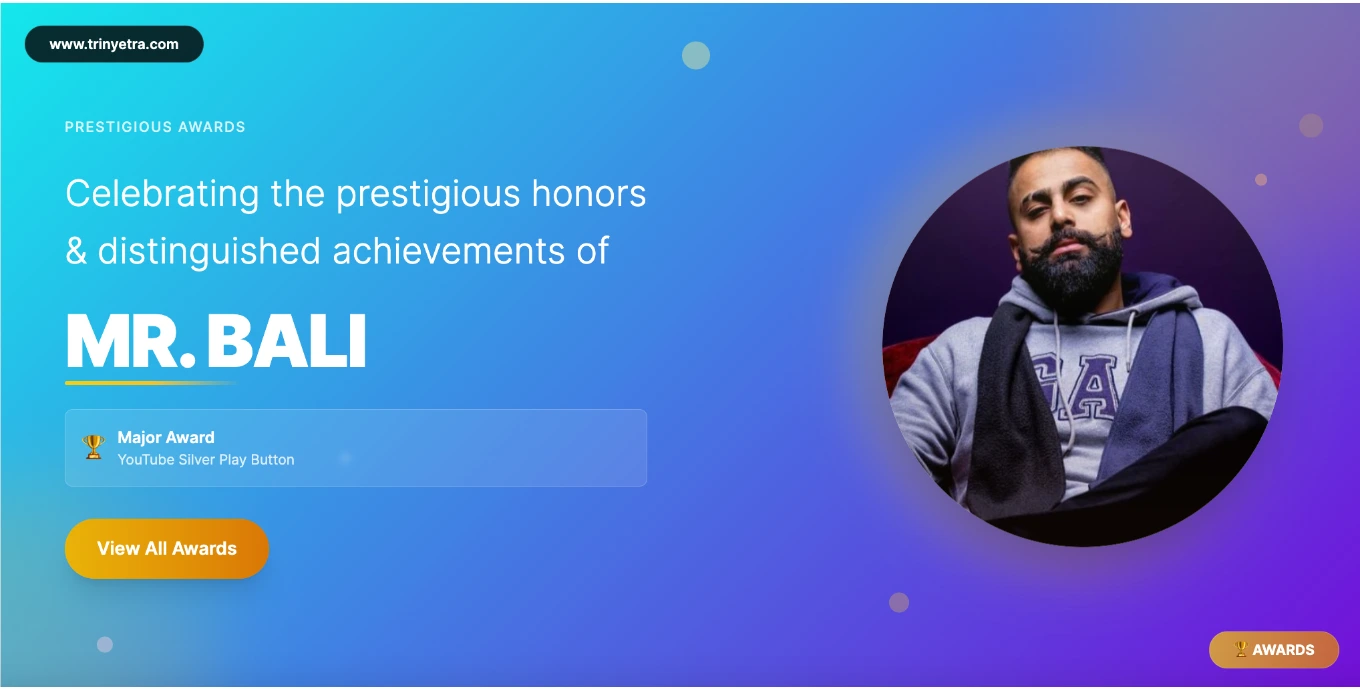
|
Social Media & Fan Following
Mr. Bali has built a substantial social media presence across platforms, crucial for modern musicians whose success depends significantly on direct audience connection and algorithmic favor rather than traditional industry gatekeeping.
| Platform | Handle | Followers/Subscribers | Content Strategy |
|---|---|---|---|
| @Bali | 600K+ followers | Music teasers, lifestyle posts, fan engagement, motivational content | |
| YouTube | The Official Bali | 600K+ subscribers | Music videos, vlogs, behind-the-scenes, interviews |
| Spotify | Mr. Bali | Millions of streams | Complete discography, playlist placements |
| Mr. Bali Official | Active presence | Video shares, event promotions, fan community |
Engagement Strategy & Community Building
Mr. Bali's social media approach emphasizes authentic engagement over vanity metrics. Rather than just accumulating followers, he actively responds to comments, shares fan-created content (covers, dance videos, art), and maintains a conversational tone that makes followers feel personally connected rather than viewing him as a distant celebrity.
His Instagram content balances professional (music releases, performance announcements, brand collaborations) with personal (gym sessions, behind-the-scenes glimpses, motivational thoughts), creating a multidimensional personality that audiences can relate to beyond just a music consumer relationship. This authenticity drives high engagement rates—comments, shares, saves—that algorithms favor, expanding organic reach.
YouTube strategy maximizes revenue while building community. Regular uploads maintain algorithm favor and subscriber engagement, mixing music videos (high production value, viral potential) with vlogs and personal content (lower production cost, authentic connection). This balance keeps the channel active without requiring constant music releases, while providing multiple content entry points for new viewers.
His social media metrics demonstrate genuine influence rather than purchased followers—engagement rates (likes, comments relative to follower count) remain healthy, indicating an active rather than a passive audience. This authentic following translates to real-world impact: concert attendance, streaming numbers, and brand partnership value.
Fan Demographics & Cultural Impact
Mr. Bali's fanbase primarily consists of urban Indian youth aged 16-30, with strong representation in the Delhi-NCR region but nationwide reach. His Hindi-Punjabi lyrics appeal particularly to North Indian audiences while remaining accessible to pan-Indian hip-hop fans who understand Hindi.
The demographic skews male (approximately 70-30 split typical for Indian hip-hop), but his motivational content and authentic personality attract a growing female audience. His fans identify as hustlers, entrepreneurs, students balancing family expectations with personal dreams—people seeing their own struggles reflected in his lyrics.
Diaspora audiences (Indians in the US, UK, Canada, Middle East) form a secondary demographic, consuming his content for cultural connection and to stay current with India's evolving entertainment scene. For diaspora youth, artists like Bali provide linguistic and cultural touchstones, maintaining a connection to contemporary Indian culture beyond their parents' generation.
Industry Relationships & Collaborations
Collaborations with Established Artists
Mr. Bali has strategically collaborated with key figures in Indian hip-hop, building relationships that provide credibility, cross-promotional opportunities, and learning from more experienced artists. While specific collaboration details weren't extensively documented in available sources, his participation in MTV Hustle and the Delhi hip-hop scene indicates connections with major names.
His relationship with Divine (one of Indian hip-hop's pioneers, whose life partly inspired "Gully Boy") represents significant validation—respect from scene founders matters deeply in hip-hop culture where authenticity and peer recognition trump commercial metrics. Similar connections with Raftaar and Badshah (mainstream crossover successes) demonstrate his acceptance across hip-hop's underground-to-commercial spectrum.
These industry relationships function practically: collaboration opportunities that expose him to partners' fanbases, festival bookings through shared networks, knowledge sharing about navigating the music business, and collective strengthening of Indian hip-hop against Bollywood's traditional dominance of the music industry.
Supporting Emerging Artists
Beyond benefiting from established artists' support, Mr. Bali actively supports emerging talent—featuring new rappers on his tracks, promoting young artists through his social media platforms, and participating in underground events where the next generation develops skills. This generosity builds goodwill and ensures the scene's continued growth, from which he benefits as a recognized elder figure.
His MTV Hustle guest judging provided a platform to mentor aspiring rappers directly, sharing technical knowledge about flow, wordplay, and performance while also offering guidance about industry navigation and maintaining authenticity amid commercial pressures. These mentorship roles position him as a scene leader rather than just an individual artist.
Cross-Industry Connections
Mr. Bali's "Rise and Fall" appearance connected him with Ashneer Grover and non-music entertainment personalities, expanding his network beyond hip-hop circles. These diverse connections create opportunities in brand partnerships, business ventures, and media appearances that purely music-focused artists miss.
His digital creator identity connects him with the influencer economy—relationships with YouTubers, Instagram creators, and digital marketers who operate in the parallel entertainment space. These connections facilitate knowledge sharing about algorithm optimization, audience building, and monetization strategies relevant across digital content types.
Frequently Asked Questions About Mr. Bali
Personal Information & Background
What is Mr. Bali's real name and age?
Mr. Bali's real name is Sachin Bali. He was born on April 14, 1994, making him 31 years old as of 2025. He was born and raised in Delhi, India, into a Punjabi Sikh family.
What is Mr. Bali's height and weight?
Mr. Bali stands 5 feet 8 inches (173 cm) tall and weighs approximately 165 lbs (75 kg). He maintains an athletic physique with chest: 43 inches, waist: 32 inches, and biceps: 13 inches through regular fitness routines.
Is Mr. Bali married or in a relationship?
As of 2025, Mr. Bali's relationship status is not publicly known. He maintains privacy regarding his personal romantic life, focusing public attention on his music career and business ventures instead.
What is Mr. Bali's religion and cultural background?
Mr. Bali follows Sikhism and comes from a Punjabi Sikh family. His cultural background significantly influences his music, incorporating Punjabi linguistic elements and representing Delhi's diverse Punjabi community in his artistic identity.
Where was Mr. Bali born and where does he live?
Mr. Bali was born in Delhi, India and continues to reside in Delhi. The capital city's culture, slang, and street life significantly influence his music and public persona, making him a proud representative of Delhi's hip-hop scene.
Career & Music
How did Mr. Bali start his rap career?
Mr. Bali began rapping in 6th grade during school events, showing early interest in rhythm and rhyme. He officially started his professional career in 2016 with his debut track "MP3," gradually building recognition through Delhi's underground hip-hop circuit, YouTube uploads, and consistent music releases.
What is Mr. Bali's most famous song?
Mr. Bali's most famous track is "Sunn Na" (meaning "Listen"), which went viral across Indian social media and YouTube with millions of views. The song's sarcastic lyrics about fake friends and staying true to oneself resonated strongly with young Indian audiences, establishing him as a major voice in Desi Hip-Hop.
What are Mr. Bali's other hit songs?
Beyond "Sunn Na," Mr. Bali's notable tracks include "Kamyaab" (Successful) and "Grind Mode", both celebrating hustle culture and perseverance. These songs became anthems for Indian entrepreneurs and students pursuing unconventional careers, frequently used in motivational social media content.
What languages does Mr. Bali rap in?
Mr. Bali primarily raps in Hindi and Punjabi, often mixing both languages within single verses through code-switching. He also incorporates English phrases strategically, creating linguistic texture that appeals to North India's multilingual audiences while remaining accessible to pan-Indian hip-hop fans.
Has Mr. Bali released any albums?
As of 2025, Mr. Bali has focused on strategic single releases rather than full albums, consistent with modern streaming-era strategy where singles often generate more impact than album drops. His discography emphasizes quality over quantity, with each release receiving focused promotion.
What is Mr. Bali's signature rap style?
Mr. Bali is known for his sarcastic punchline-heavy delivery and relatable storytelling. His flow combines aggressive energy typical of Delhi rap with humor and wordplay, distinguishing him from purely aggressive or emotional styles. His lyrics often address middle-class Indian youth's struggles with authenticity.
Was Mr. Bali a judge on MTV Hustle?
Yes, Mr. Bali served as a guest judge on MTV Hustle Season 2, India's premier rap reality show. This role provided mainstream visibility and demonstrated industry recognition of his expertise, credibility, and ability to mentor emerging hip-hop talent.
When did Mr. Bali start his YouTube channel?
Mr. Bali launched his YouTube channel "The Official Bali" during his early career years (around 2016-2017), using the platform to release music videos, vlogs, and behind-the-scenes content. The channel has grown to 600,000+ subscribers, making it a primary income source and audience engagement platform.
Does Mr. Bali perform live concerts?
Yes, Mr. Bali regularly performs at college festivals, hip-hop concerts, and multi-city tours across India. His live performances typically command fees of ₹2-5 lakhs per show, depending on event scale and location, forming a substantial part of his annual income.
What is Mr. Bali's role in Delhi's hip-hop scene?
Mr. Bali is a prominent representative of Delhi's hip-hop culture, which differs from Mumbai's scene in its Punjabi influences and aggressive delivery. He actively supports emerging Delhi rappers, participates in cipher sessions, and maintains underground credibility while achieving mainstream success.
Financial & Lifestyle
What is Mr. Bali's net worth in 2025?
As of 2025, Mr. Bali's estimated net worth is $600,000 USD (approximately ₹5 crore). This wealth comes from multiple sources, including YouTube revenue, live performances, streaming platforms, brand collaborations, and his family business involvement.
How much does Mr. Bali earn monthly?
Mr. Bali's estimated monthly income ranges ₹7-10 lakhs, varying based on performance bookings, music releases, brand partnerships, and YouTube performance. His income streams are diversified across multiple sources rather than depending solely on one revenue channel.
What are Mr. Bali's income sources?
Mr. Bali earns from multiple revenue streams: YouTube ad revenue (₹3-5 lakhs monthly), live performance fees (₹2-5 lakhs per show), streaming platforms (Spotify, Apple Music, JioSaavn), brand collaborations, and co-managing a family business. This diversification provides financial stability.
Does Mr. Bali own any luxury cars?
Specific details about Mr. Bali's car collection haven't been publicly disclosed. Unlike some rappers who extensively showcase luxury vehicles, Bali appears more private about material possessions, though his net worth suggests the ability to afford premium vehicles.
What business does Mr. Bali run?
Mr. Bali co-manages a family business alongside his music career, though specific industry details remain private. This business involvement provides financial stability independent of music career fluctuations and demonstrates the "hustle" mentality he celebrates in his lyrics.
Does Mr. Bali have brand endorsements?
Yes, Mr. Bali participates in brand collaborations targeting young urban Indians, typical for artists at his level. These partnerships range from product placements in music videos to dedicated social media promotional posts, earning ₹1-3 lakhs per campaign depending on deliverables.
Where does Mr. Bali live in Delhi?
While Mr. Bali resides in Delhi, specific residential location details haven't been publicly shared for privacy and security reasons. His social media occasionally features Delhi locations during shoots or events, maintaining a connection to his hometown.
Personal Life & Interests
What are Mr. Bali's hobbies besides music?
Beyond rapping, Mr. Bali enjoys business management, content creation, and fitness. He regularly works out to maintain his athletic physique, creates diverse digital content for YouTube and Instagram, and actively manages his entrepreneurial ventures alongside music production.
What is Mr. Bali's fitness routine?
Mr. Bali maintains his athletic build (43" chest, 32" waist, 13" biceps) through regular gym sessions focusing on strength training and cardiovascular fitness. Physical conditioning is important for energetic stage performances and maintaining the visual presentation expected in the modern music industry.
Does Mr. Bali support any social causes?
While specific charitable activities haven't been extensively publicized, Mr. Bali's support for emerging artists and participation in community-building within the Indian hip-hop scene represent a meaningful contribution. His motivational content also addresses mental health and pursuing dreams despite societal pressure.
What is Mr. Bali's zodiac sign?
Born on April 14, Mr. Bali's zodiac sign is Aries. Astrologically, Aries traits include confidence, leadership, competitive spirit, and directness—characteristics that align with his assertive rap style and entrepreneurial approach to career building.
Who are Mr. Bali's musical influences?
Mr. Bali's influences include international rappers like Eminem (lyrical complexity and delivery) and Indian hip-hop pioneers like Divine, Badshah, and Raftaar who proved Desi Hip-Hop's commercial viability. These influences shaped his blend of aggressive delivery with relatable storytelling.
Latest Updates & Projects (2025)
What is Mr. Bali's latest project in 2025?
In 2025, Mr. Bali appeared as a contestant on "Rise and Fall" reality show hosted by Ashneer Grover, marking significant mainstream television exposure beyond music-focused content. He continues releasing music singles and maintaining active YouTube content creation.
Why did Mr. Bali join The Rise and Fall reality show?
Mr. Bali joined "Rise and Fall" for mainstream exposure to audiences beyond hip-hop fans, personal growth challenges, and diversifying his entertainment portfolio. Reality TV provides visibility to demographics who might never discover him through music alone, expanding his overall brand reach.
What controversies happened on Rise and Fall?
Mr. Bali was involved in a heated exchange with actress Aahana Kumra during a nomination task, sparking social media debates about communication style and gender dynamics. He also faced criticism from influencer Nayandeep Rakshit over comments viewed as insensitive regarding gender inclusivity.
Is Mr. Bali releasing new music in 2025?
Yes, Mr. Bali continues releasing singles throughout 2025 alongside his reality TV appearance. His strategy balances maintaining music career momentum while exploring mainstream entertainment opportunities that introduce him to broader audiences.
What are Mr. Bali's upcoming concerts?
Mr. Bali regularly performs at hip-hop festivals, college events, and concerts across India. Specific upcoming dates are typically announced through his Instagram and YouTube channels, where fans can get ticket information and show details.
Social Media & Fan Engagement
What is Mr. Bali's Instagram username?
Mr. Bali's official Instagram handle is @Bali with over 600,000+ followers. His account features music teasers, lifestyle content, motivational posts, and fan engagement, making it his primary platform for direct audience connection.
What is Mr. Bali's YouTube channel name?
His official YouTube channel is "The Official Bali" with 600,000+ subscribers. The channel features music videos, vlogs, behind-the-scenes content, and interviews, serving as both a revenue source and a primary audience engagement platform.
How many followers does Mr. Bali have across platforms?
Mr. Bali has 600,000+ subscribers on YouTube, 600,000+ followers on Instagram, and a substantial presence on Spotify and other streaming platforms. His combined reach across all platforms extends to millions, making him one of India's most-followed independent hip-hop artists.
Does Mr. Bali respond to fan messages?
Yes, Mr. Bali is known for authentic fan engagement, regularly responding to comments on Instagram and YouTube, sharing fan-created content (covers, art, dance videos), and maintaining a conversational tone rather than a distant celebrity persona. This accessibility builds a loyal community connection.
Where can I listen to Mr. Bali's music?
Mr. Bali's music is available on all major platforms: YouTube, Spotify, Apple Music, JioSaavn, Gaana, Amazon Music, and YouTube Music. His YouTube channel remains the primary destination for music videos with visual elements, while audio streaming platforms offer convenient listening.
Comparisons & Industry Context
How is Mr. Bali different from other Indian rappers?
Mr. Bali distinguishes himself through sarcastic lyrical style, authentic Delhi representation, and dual career as an entrepreneur. Unlike rappers who purely imitate Western styles, he maintains cultural authenticity, while his business involvement demonstrates practiced hustle rather than just rapped concepts.
Is Mr. Bali better known than Divine or Raftaar?
Mr. Bali is a recognized figure in Indian hip-hop but operates at a different tier than pioneers like Divine and Raftaar who have mainstream Bollywood crossovers and larger commercial success. However, within Delhi's underground scene and among core hip-hop fans, he commands significant respect and influence.
Has Mr. Bali worked with Bollywood?
As of 2025, Mr. Bali has not significantly crossed into Bollywood playback singing, maintaining focus on independent hip-hop career. This reflects both personal artistic choice and Bollywood's slower adoption of authentic hip-hop compared to commercialized versions by established singers.
What is the difference between Delhi and Mumbai hip-hop?
Delhi hip-hop (represented by Mr. Bali) features more Punjabi influences, aggressive delivery, and distinct slang, while Mumbai hip-hop (popularized by "Gully Boy") focuses on street struggles and has a different linguistic style. Both contribute unique flavors to Indian hip-hop's diversity.
Career Advice & Inspiration
How can aspiring rappers learn from Mr. Bali's career?
Key lessons from Mr. Bali's journey include: maintain financial stability through multiple income streams, stay authentic to your cultural identity, build consistent digital presence, engage genuinely with fans, collaborate strategically, and balance underground credibility with mainstream opportunities for sustainable long-term success.
What advice has Mr. Bali given to emerging artists?
Through MTV Hustle judging and interviews, Mr. Bali emphasizes consistency, authenticity, technical skill development, and business understanding. He advises emerging artists to treat music as a business requiring strategic planning, not just creative expression, while maintaining artistic integrity.
What challenges did Mr. Bali face in his career?
Mr. Bali faced challenges common to Indian independent artists: limited industry infrastructure, self-funding requirements, balancing music with financial stability needs, overcoming skepticism about hip-hop as a legitimate career, and navigating the transition from underground to mainstream without losing credibility.
Technical & Artistic Questions
What equipment does Mr. Bali use for recording?
While specific equipment details haven't been publicly disclosed, professional Indian hip-hop artists typically use home studios with quality microphones, audio interfaces, and DAW software for production. As his career grew, Bali likely upgraded from basic setups to professional-grade equipment.
Who produces Mr. Bali's beats?
Mr. Bali collaborates with various producers within Delhi's hip-hop community, though specific producer credits vary by track. The Indian hip-hop scene emphasizes collaborative relationships between rappers and producers, with many tracks featuring multiple contributors.
Does Mr. Bali write his own lyrics?
Yes, Mr. Bali writes his own lyrics, essential for credibility in hip-hop culture where authenticity and personal storytelling are paramount. His sarcastic style and specific cultural references reflect a personal voice rather than ghostwritten content.
What is Mr. Bali's creative process?
While the detailed creative process hasn't been extensively documented, his content suggests drawing inspiration from personal experiences, current events, and Delhi street culture. His YouTube vlogs occasionally show studio sessions, revealing a collaborative environment with producers and engineers.
Cultural Impact & Legacy
What is Mr. Bali's impact on Indian hip-hop?
Mr. Bali contributes to legitimizing Desi Hip-Hop as a viable career path, representing Delhi's unique hip-hop culture, and demonstrating a sustainable independent artist model. His success without Bollywood connections inspires emerging artists that talent and consistency can build careers without traditional entertainment industry gatekeeping.
How has Mr. Bali influenced youth culture?
Mr. Bali's hustle culture messaging, entrepreneurial dual-career model, and authentic representation of middle-class struggles resonate with Indian youth navigating similar challenges. His motivational content and success story inspire pursuing unconventional careers despite family and societal pressure.
Will Mr. Bali continue in reality TV?
While specific plans haven't been announced, his "Rise and Fall" success suggests potential for more reality TV or mainstream entertainment opportunities. However, his core focus likely remains a music career, with television serving as a supplementary visibility and income source.
What is Mr. Bali's long-term career vision?
Based on his trajectory, Mr. Bali appears focused on building a sustainable multi-platform brand combining music, digital content, business ventures, and selective mainstream opportunities. His approach suggests a long-term vision of lasting influence rather than short-term viral fame.
Related Indian Hip-Hop Artists
If you enjoyed reading about Mr. Bali, you might also be interested in learning about these other prominent figures in India's Desi Hip-Hop scene:
- Divine: Mumbai-based pioneer who inspired "Gully Boy," representing India's street rap movement with international recognition and Bollywood crossovers.
- Raftaar: Punjabi rapper-turned-mainstream star known for Bollywood playback singing while maintaining hip-hop credibility.
- Badshah: Commercial hip-hop success story with chart-topping hits and massive brand partnerships, demonstrating genre's commercial potential.
- Emiway Bantai: Independent Mumbai rapper who built a massive following without label support, similar to Mr. Bali's independent approach.
- King (Rockers): MTV Hustle winner who transitioned from reality TV to a successful music career, showcasing the show's platform effectiveness.
For more biographies of Indian musicians, entertainers, and cultural influencers, explore our comprehensive celebrity coverage on Trinyetra.
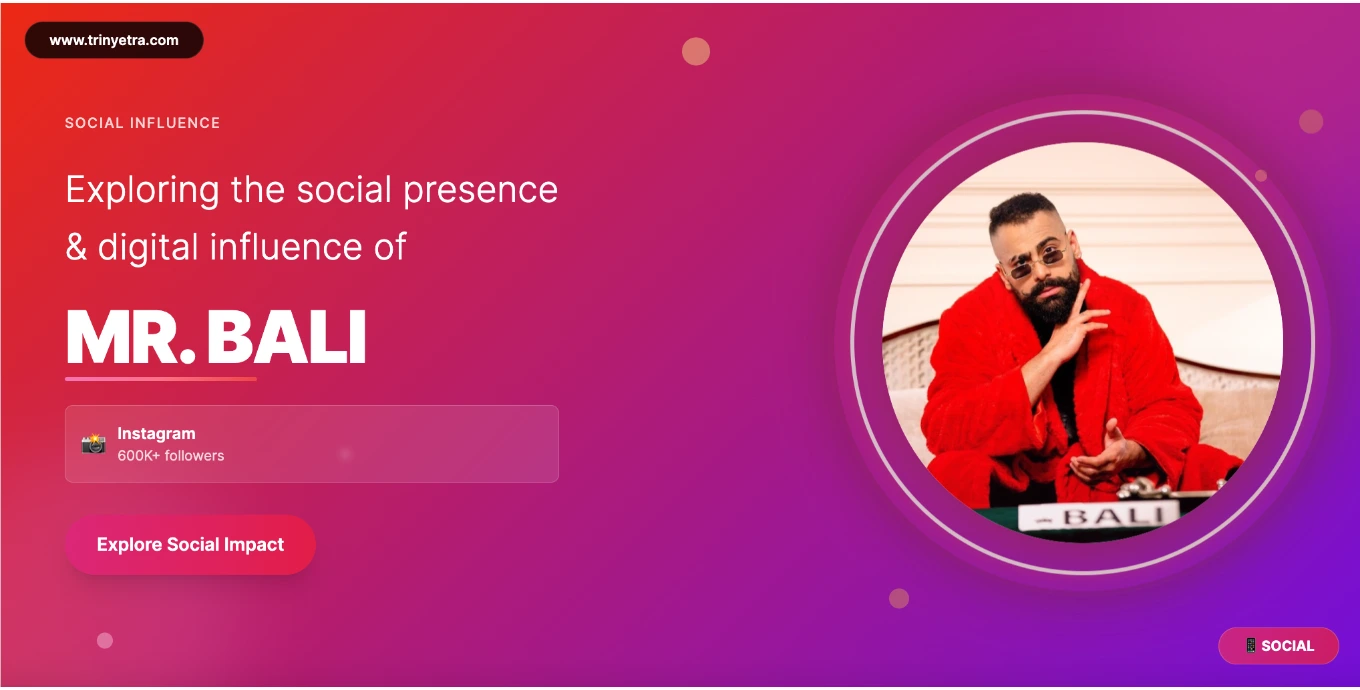
|
Related Articles
Explore the journeys of remarkable individuals who continue to inspire across industries and cultures with their unique contributions.
- Michael Shannon Biography, Age, Net Worth, Height, Movies & Latest Updates
- Jonathan Majors Biography, Age, Net Worth, Height, Movies & Latest Updates
- Oscar Isaac Biography, Age, Net Worth, Height, Movies & Latest Updates
- Justice Smith Biography, Age, Net Worth, Height, Movies & Latest Updates
- John Krasinski Biography, Age, Net Worth, Height, Movies & Latest Updates
- Maniesh Paul Biography, Age, Net Worth, Wife, Movies & Latest Updates
- Abhishek Sharma Biography, Age, IPL, Girlfriend, Net Worth & Latest Updates
- Charles Melton Biography, Age, Net Worth, Height, Movies & Latest Updates
- Akshay Oberoi Biography, Age, Wife, Movies, Fighter & Latest Updates
- Abhishek Bajaj Biography, Age, Net Worth, Height, Movies & Facts
- Zeishan Quadri Bigg Boss 19: Biography, Age, Net Worth, Height, Movies & Facts
- Millie Bobby Brown Biography, Age, Net Worth, Height, Movies & Latest Updates
- Arjun Bijlani Biography, Age, Net Worth, Television Shows & Latest Updates
- Arbaz Patel Biography, Age, Net Worth, Height, Reality Shows & Facts
- Sanya Malhotra Biography, Age, Net Worth, Height, Movies & Facts
- Janhvi Kapoor Biography, Age, Net Worth, Bollywood Movies & Latest Updates
- Varun Dhawan Biography, Age, Net Worth, Bollywood Movies & Latest Updates
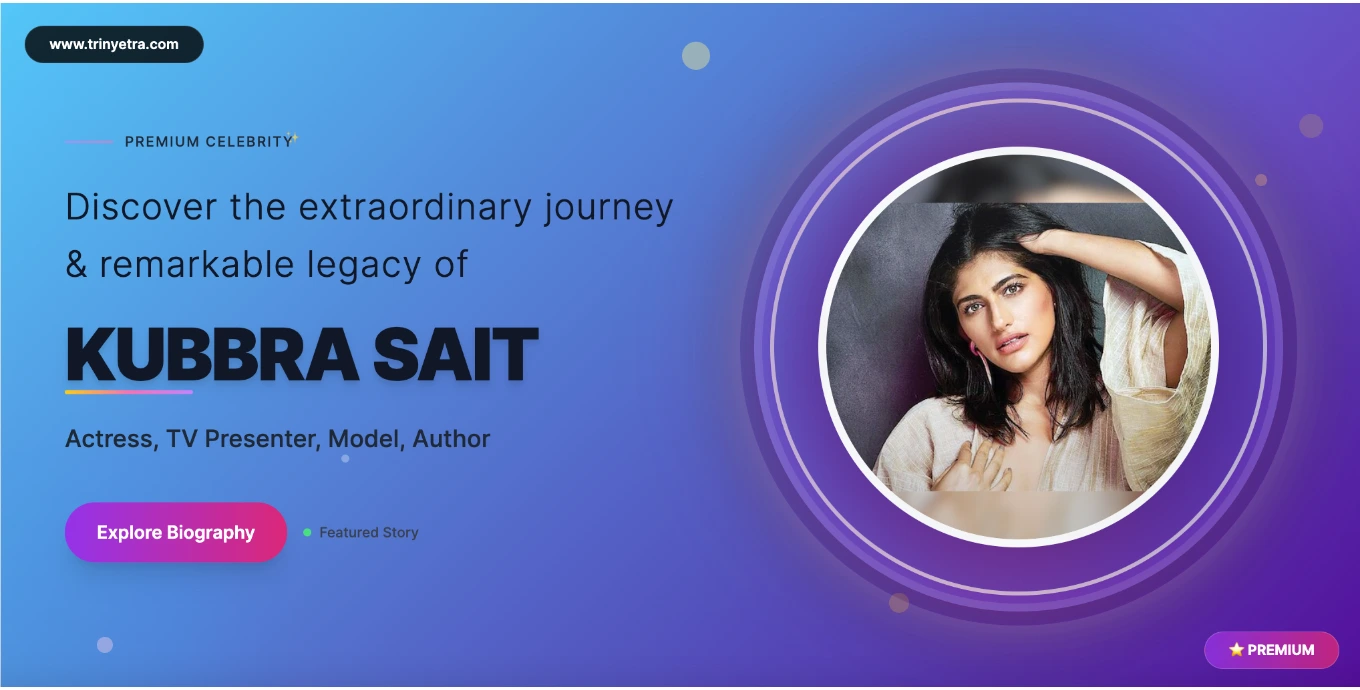
Kubbra Sait Biography, Age, Net Worth, Sacred Games, Mov...
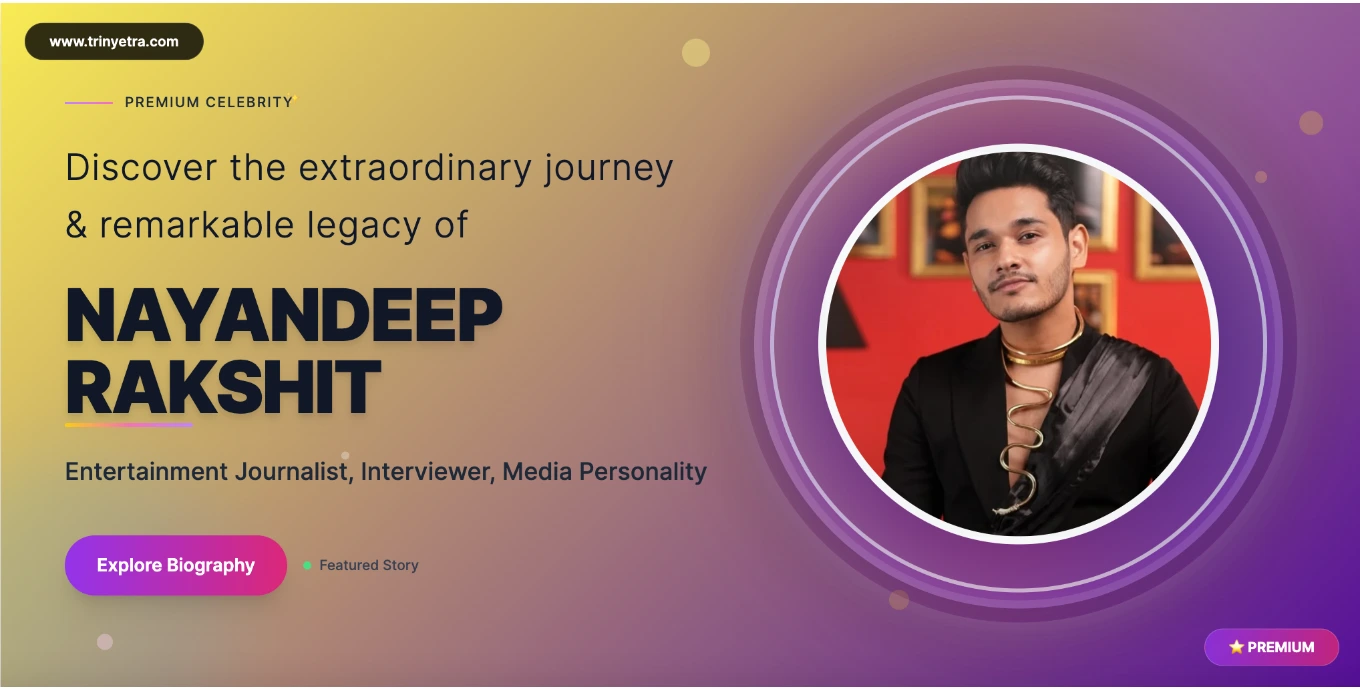
Nayandeep Rakshit Biography, Age, Net Worth, Career & Facts
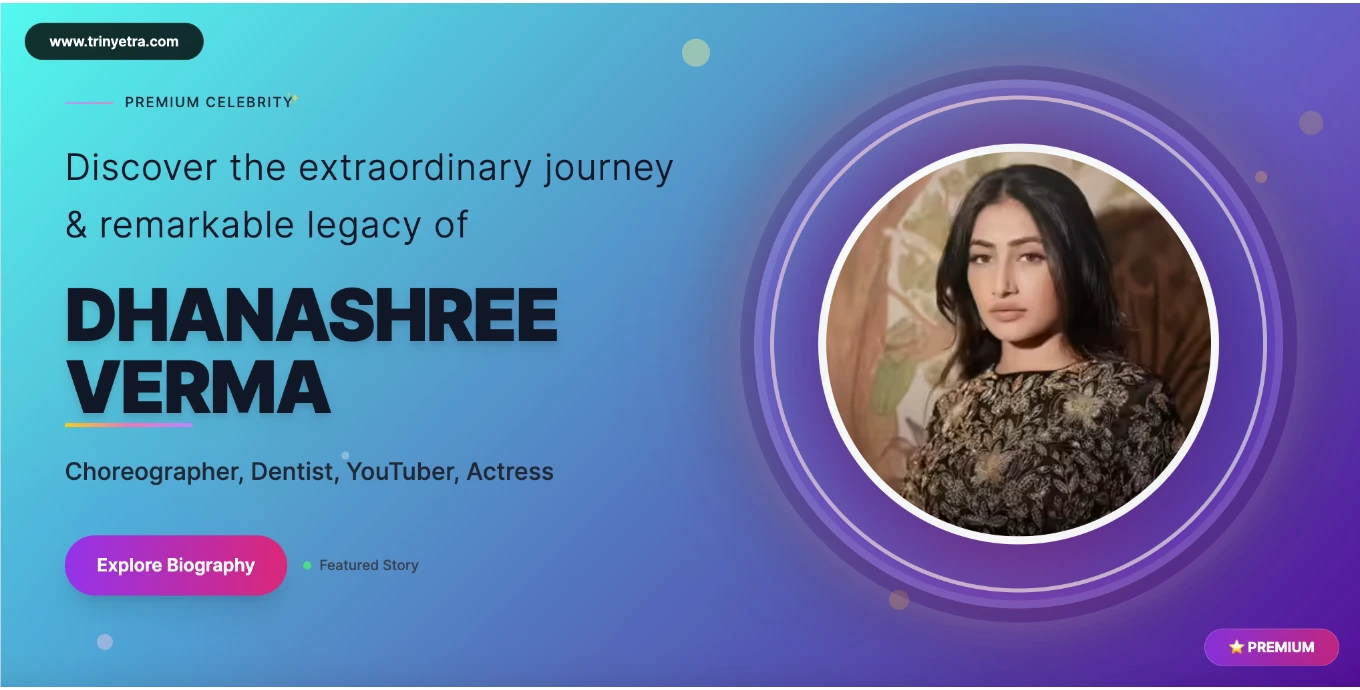
Dhanashree Verma Biography, Age, Net Worth, Dance Career...

Neha Kakkar Lifestyle, Automobiles, Family, Husband & More
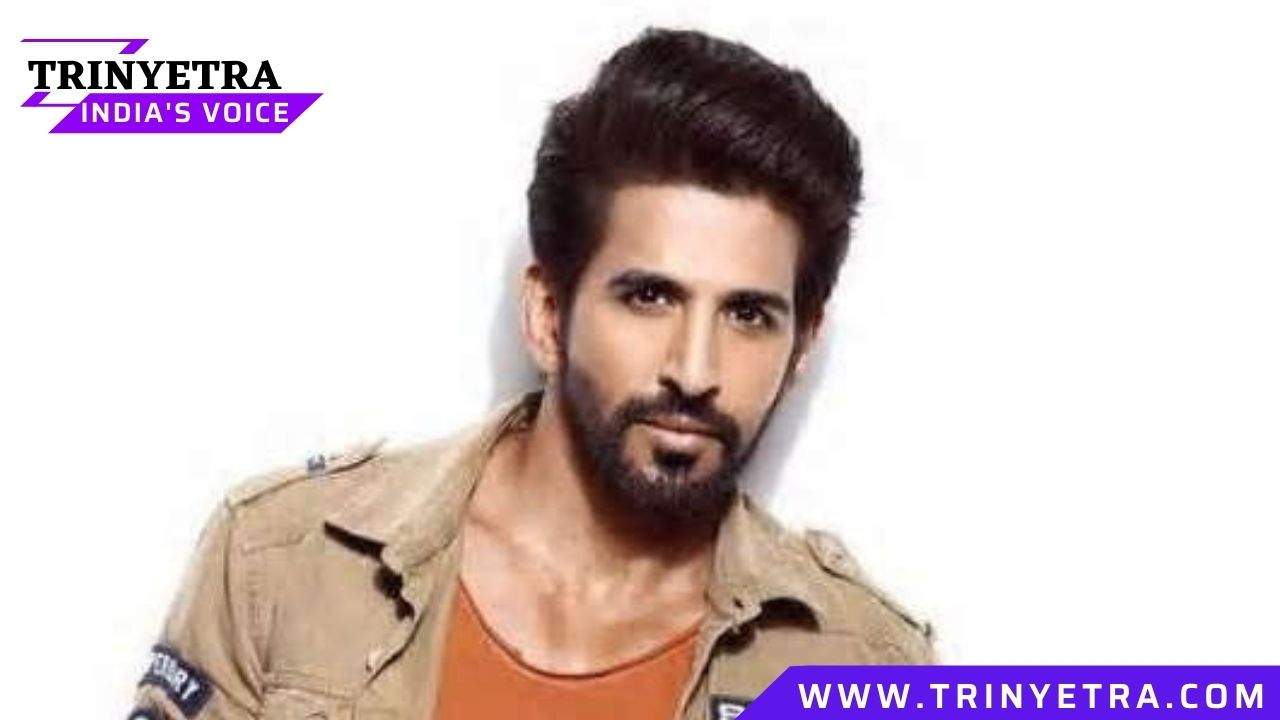
Vishal Kotian Lifestyle, Automobile, Age, Family, Affair...

Shamita Shetty Lifestyle, Automobiles, Property, Net Wor...

Amit Todon Lifestyle, Automobiles, Height, Age, Family &...

Priya Banerjee Lifestyle, Automobiles, Height, Age, Fami...

Jay Bhanushali Lifestyle, Automobiles, Affairs, Family, ...

Simba Nagpal Lifestyle, Automobiles, Height, Age, Family...
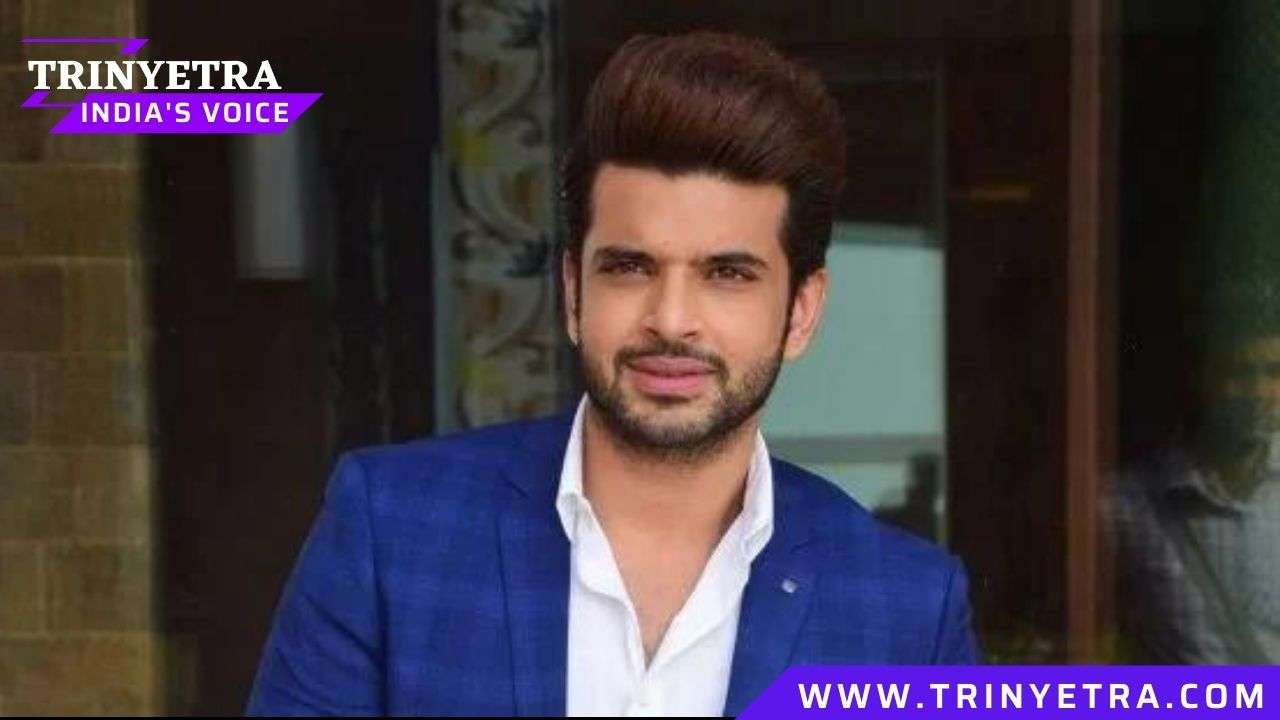
Karan Kundra Lifestyle, Automobiles, Height, Age, Family...

Miesha Iyer (Bigg Boss 15) Lifestyle, Automobiles, Heigh...

Hrithik Roshan Lifestyle, Automobiles, Height, Age, Fami...

Sharvari Wagh Upcoming Movies, Relationships, Age, Heigh...

Pratik Sehajpal (Bigg Boss 15) Lifestyle, Automobiles, H...

Priyanka Chopra (Jonas) Controversies, Husband, Age & Ma...

Ranveer Singh (83 movie) Biography, Affairs, Cars, Sala...

Deepika Padukone (83 FIlm) Biography, Affairs, Salary & ...

Donal Bisht (Bigg Boss 15) Lifestyle, Automobiles, Heigh...

Salman Yusuff Khan Lifestyle, Automobiles, Height, Age, ...
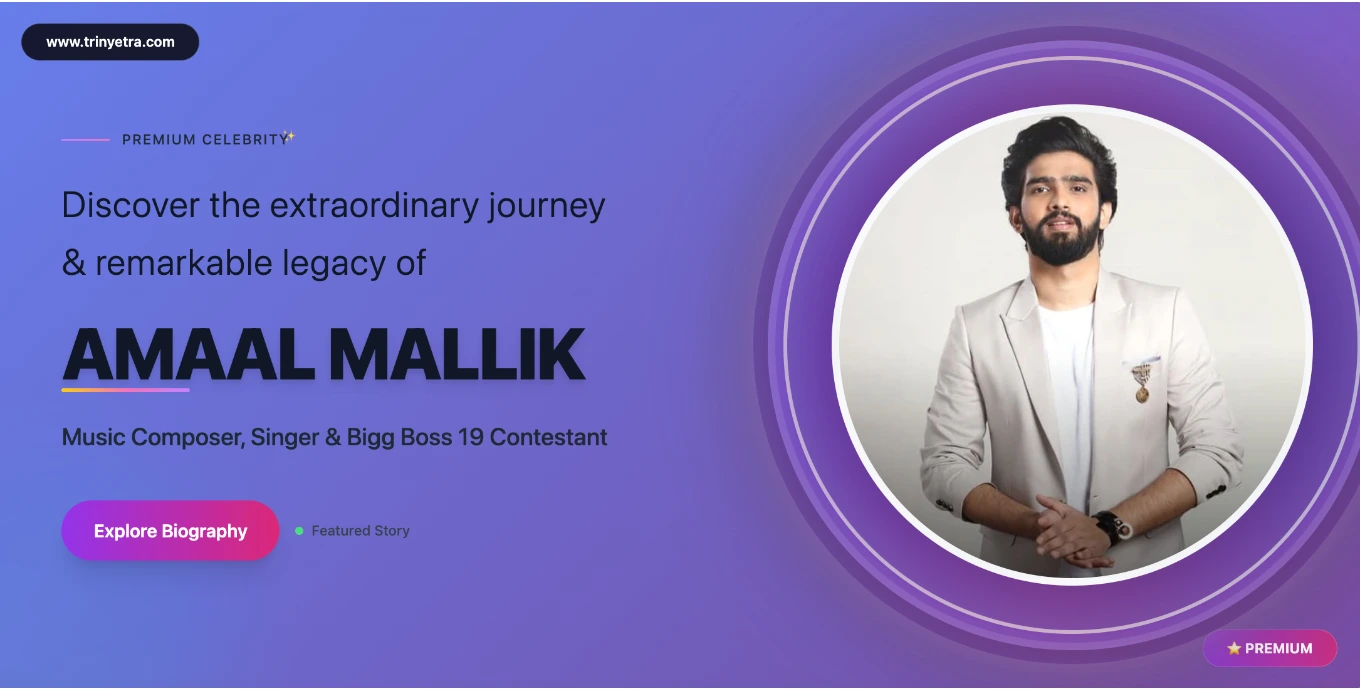
Amaal Mallik Biography, Age, Net Worth, Height, Movies &...
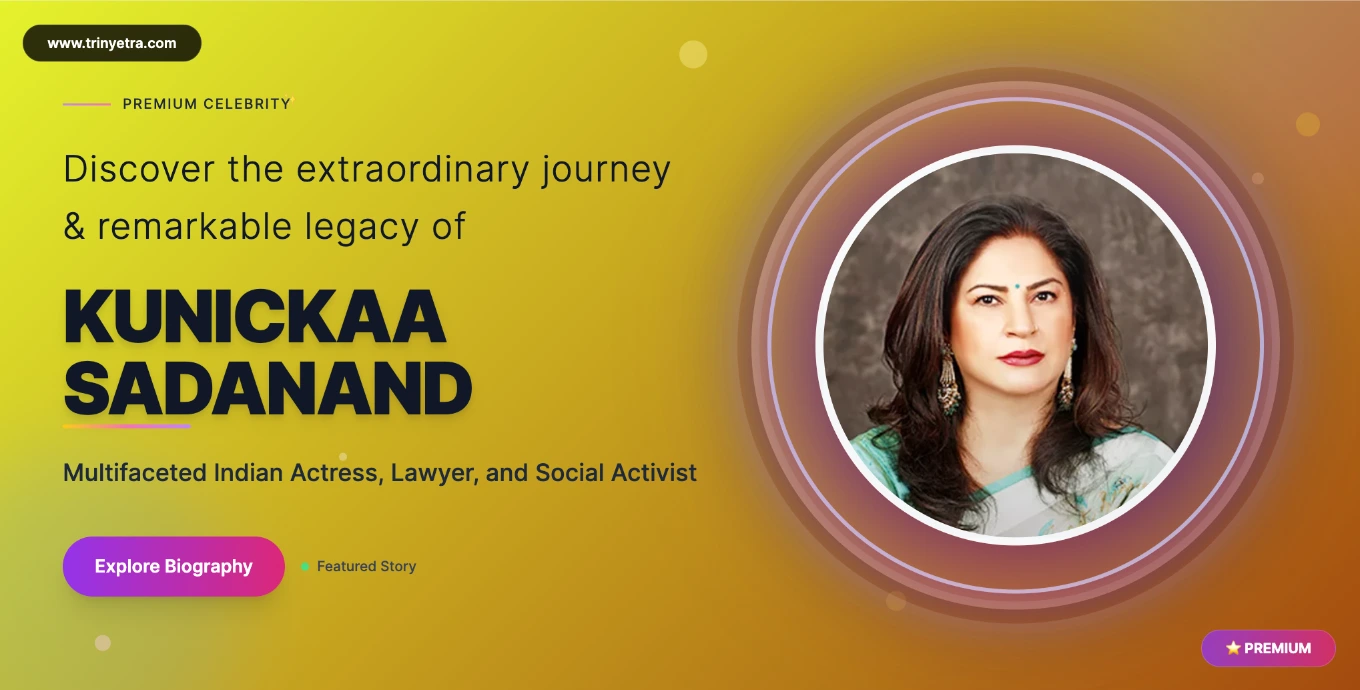
Kunickaa Sadanand Bigg Boss 19 Biography, Age, Net Worth...
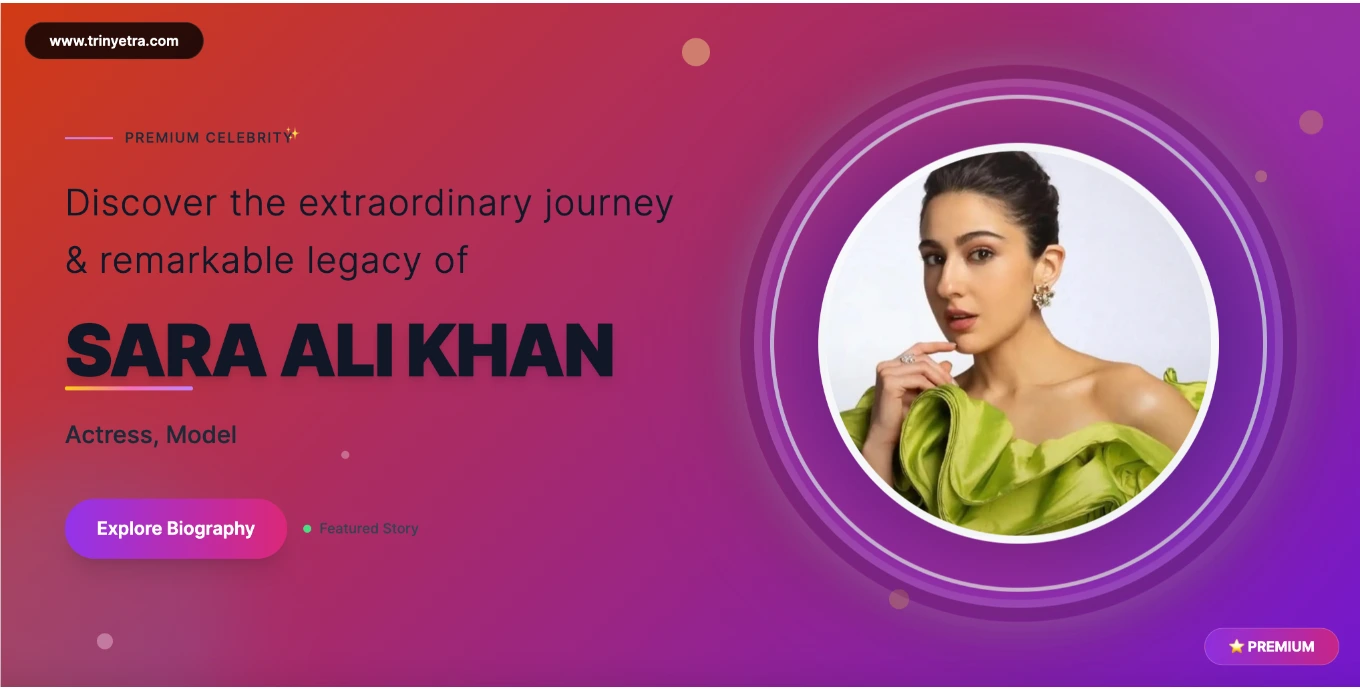
Sara Ali Khan Biography: Bollywood Icon, Age, Net Worth ...
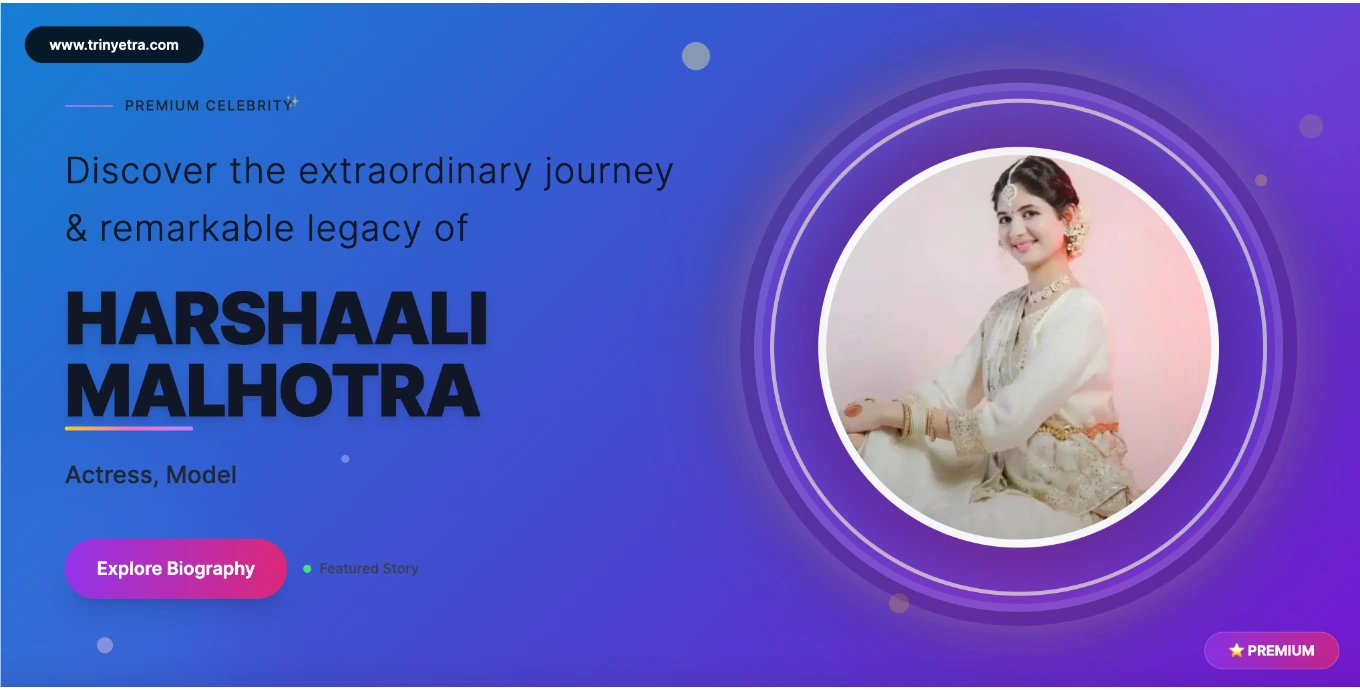
Harshaali Malhotra Biography, Age, Net Worth, Bollywood ...
